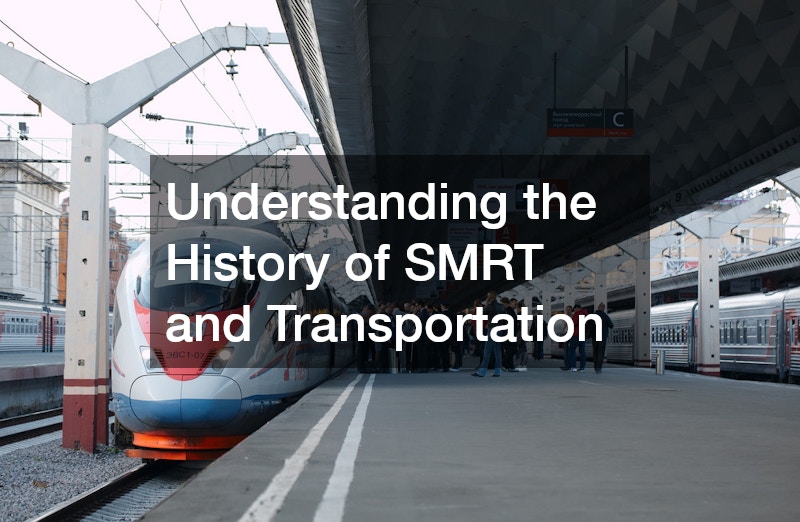What is SMRT and How Did It Begin?
Origins of SMRT
SMRT Corporation, rooted in Singapore, began as a response to the burgeoning needs of a rapidly growing urban population in the late 20th century. Inspired by global leaders in rail transit, visionary planners aimed to create a robust and efficient public transportation network that could rival any international equivalent.
The initial groundwork for SMRT was laid in the 1980s, marking a significant shift towards advanced urban mobility solutions. These founding principles were focused on creating a model that prioritized accessibility and reliability, setting the foundation for SMRT’s enduring legacy in transport.
Reflecting Singapore’s ambition to elevate its infrastructure to global standards, SMRT’s inception was a testament to forward-thinking urban planning. The corporation aimed not only for functionality but also for a sustainable transit solution that responded to environmental challenges of the time.
The Initial Challenges and Solutions
The SMRT faced multiple technical and logistical hurdles during its nascent stages, including the complexity of integrating new transit lines into a bustling cityscape. Innovators at SMRT, however, devised one of the most efficient train networks of its time, utilizing cutting-edge rail technology and urban planning tactics.
Financial constraints were a significant concern during SMRT’s early development, which was mitigated by strategic public-private partnerships and government support. By aligning with progressive transport policies, SMRT harnessed necessary resources and maintained momentum for its projects.
Among the early technical challenges, creating seamlessly synchronized schedules for smooth transit operations stood paramount. Implementing advanced signaling systems served as a crucial solution to ensure the high punctuality and safety standards inherent today.
How Has SMRT Evolved Over the Years?
Infrastructure Expansion
Since its inception, SMRT has continuously expanded, transitioning from basic routes to a comprehensive island-wide rail system. Each network extension signified a strategic effort to connect underserved areas, substantially improving local commuting experiences.
The addition of new lines and stations over the decades illustrates SMRT’s commitment to accommodating Singapore’s evolving socioeconomic landscape. Major expansions were synchronized with urban development projects to ensure seamless integration and city-wide accessibility.
This growth was coupled with a phased construction approach, allowing for minimal disruption while adapting to changing passenger loads. SMRT’s methodical planning and execution have significantly enhanced its capacity and efficiency, catering to millions of passengers daily.
Technological Advancements
Technology has been instrumental in SMRT’s transformation, with continuous innovations powering its operations. Early adoption of automated train operations reduced human error and improved service precision.
Real-time data analytics have become a core component in enhancing passenger experience through improved trip planning and quick response to service disruptions. Leveraging modern communication technologies also facilitates efficient information exchange between systems and passengers.
SMRT has also integrated environmentally friendly technologies aimed at reducing energy consumption and improving efficiency. The deployment of regenerative braking systems stands as a prime example of its innovative strategies contributing to sustainability goals.
What Are the Key Features of SMRT Today?
Modern Facilities and Services
Today, SMRT excels in offering state-of-the-art facilities across its network, contributing to enhanced user convenience and satisfaction. With features such as cashless payments and barrier-free accessibility, a traveler-focused approach is at the forefront of SMRT’s service enhancements.
The incorporation of digital solutions, including mobile apps and real-time information displays, further strengthens customer interaction and experience. These technologies facilitate easier navigation and planning for commuters, reflecting SMRT’s commitment to modernity.
Further supporting seamless travel, SMRT stations house amenities such as retail outlets and diverse dining options, transforming commutes into a more engaging experience. Through continuous upgrades, SMRT aligns its facilities with evolving consumer expectations and urban trends.
Sustainability Initiatives
Environmental responsibility remains a core pillar of SMRT’s operations, with initiatives focused on reducing carbon emissions and fostering a green commute. As a leader in sustainable transport, SMRT routinely practices the use of eco-friendly technologies and renewable energy sources.
Efforts like waste management optimization and energy-efficient infrastructures highlight the company’s commitment towards minimizing its environmental footprint. Investments in research are also part of SMRT’s strategy to further explore sustainable transit solutions.
How Does SMRT Compare to Other Transportation Systems Globally?
Comparison with Other Leading Systems
Globally, SMRT is renowned for its operational efficiency and high service quality, often held in comparison with major rail networks like Tokyo’s Metro and London Underground. It shares critical attributes such as punctuality and capacity management with these respected systems.
However, SMRT distinguishes itself through its exemplary maintenance standards and cleanliness, facilitated by disciplined management and sophisticated technology. The network’s dedication to safety and seamless connectivity further enhances its standing on the global platform.
International Recognition and Achievements
SMRT has garnered several international awards, reinforcing its status as a pioneer in public transit excellence. Recognition spans diverse areas, from infrastructure design to safety adherence, illustrating a well-rounded approach to service delivery.
The network’s commitment to innovation and green initiatives has also earned it accolades in environmental stewardship sectors. These achievements are a testament to SMRT’s unwavering dedication to enhancing global public transportation standards.
What are the Future Prospects and Developments for SMRT?
Upcoming Projects and Plans
SMRT’s future vision includes ambitious expansion plans and enhancements tailored to improve capacity and connectivity. Key projects involve new lines and station developments designed to meet increasing commuting demands.
In line with progressive urban growth, SMRT’s strategy focuses on fostering a resilient and adaptable transport infrastructure. Anticipating future needs, SMRT aims to balance demand growth with equal attention to innovation and service quality.
Innovative Technology Integration
Technological foresight continues to drive SMRT’s upcoming integration projects, with artificial intelligence and IoT expected to enhance service management. The deployment of automated technologies is anticipated to further revolutionize passenger and operation experiences.
Plans are underway to incorporate 5G networks and more advanced communication platforms, enhancing real-time service updates and remote monitoring capabilities. Such innovations will reinforce SMRT’s reputation as a tech-forward transportation leader.
.

